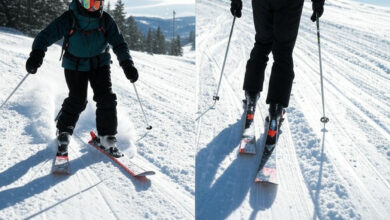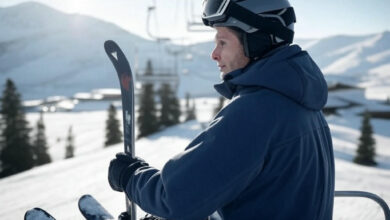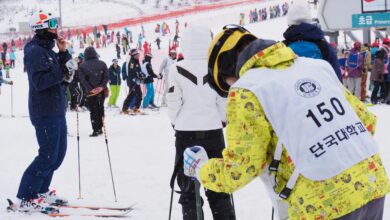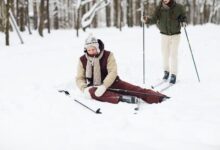How to Layer For Skiing: Do’s & Dont’s
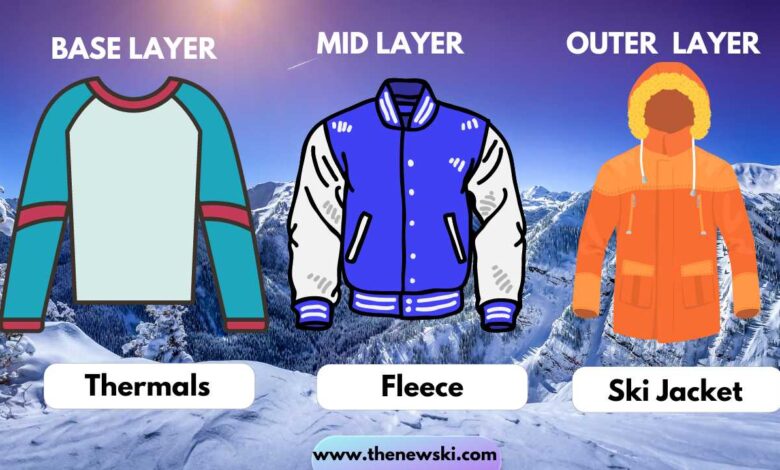
When it comes to skiing, knowing how to layer for skiing properly can make a significant difference in your comfort and performance on the slopes. The key is to balance warmth and breathability, ensuring you stay cozy without overheating. Start with a moisture-wicking base layer that pulls sweat away from your skin, followed by an insulating layer like fleece or down to trap heat. Finally, top it off with a waterproof and windproof outer layer to protect against the elements.
The most useful way to layer your skiing apparel is to have three awesome layers: a body-hugging thin base layer—an insulating mid-layer (thicker for chillier temperatures) like a fleece. You are followed by a water-proof outer layer your defense against the factors.
There are important do’s and don’ts when layering for skiing. Do choose high-quality materials designed for winter sports; they’re specifically made to manage moisture and insulation. Do dress in layers that can be easily removed or added as the weather changes. However, don’t wear cotton, as it absorbs moisture and can leave you feeling cold and damp. Don’t forget to layer your extremities as well, using proper gloves, socks, and a warm hat or helmet liner.
Learning how to layer for skiing effectively will keep you warm and comfortable throughout your day on the slopes. By following these simple do’s and don’ts, you can avoid common mistakes that might lead to discomfort or even cut your skiing day short. Remember, the right layers will not only enhance your skiing experience but also keep you safe and protected from the harsh winter conditions. Get updated with the Skiing World Cup on the new ski website.
Contents
- 1 How To Layer
- 2 Optimum Ski Layering System: The Three Essential Layers
- 3 Base Layer: How to Choose the Right Material, Fit, and Thickness
- 4 Mid Layer: Types, Fits, and When to Wear Them
- 5 Outer Layer: Why It Matters and What to Look For
- 6 How To Keep Your Hands and Feet Warm
- 7 Budgeting for Ski Clothes: How Much Does It Cost?
- 8 The Problem with Too Many Layers: Why Quality Over Quantity Matters
- 9 Do’s and Don’ts of Layering for Skiing
- 10 The Cost of Ski Clothing: How Much Should You Expect to Pay?
- 11 Conclusion
How To Layer
Optimum Ski Layering System: The Three Essential Layers
The optimum ski layering system is built around three essential layers, each serving a unique purpose to keep you warm, dry, and comfortable on the slopes. These layers work together to regulate your body temperature, wick away moisture, and protect you from harsh weather conditions. Understanding and applying this system will ensure you stay comfortable throughout your skiing adventure, no matter the weather.
Basic Layering System
- Base Layer: Wicks away sweat and maintains body warmth close to your skin.
- Mid Layer: Insulates & traps heat air.
- Outer Layer: Fully water-resistant shell in opposition to snow and wind.
The first layer is the base layer, which sits closest to your skin. Its number one function is to manage moisture through wicking sweat far from your body, retaining you dry. A true base layer is commonly made from materials like merino wool or synthetic fabric, that are brilliant at drawing moisture far from your skin. This prevents you from feeling cold and clammy, which could happen if sweat is trapped in opposition to your skin. Avoid cotton for this residue, because it absorbs moisture and takes a long time to dry, making you experience cold.
The second layer is the mind / insulating layer, which is responsible for retaining your body heat. This layer acts as your primary supply of heat, trapping the heat your frame clearly produces. Common materials for this residue include fleece, down, or synthetic insulation, all of which can be lightweight but quite powerful at retaining your heat. The insulating layer must be cushy but no longer too tight, making an allowance for easy motion at the same time as nevertheless keeping a warm temperature.
The final layer is the outer layer, often referred to as the shell. This layer is designed to guard you from the wind, rain, and snow, making sure that the elements don’t penetrate your different layers. A correct outer layer is both water-proof and windproof whilst still being breathable and sufficient to let moisture break out from the interior. This prevents you from overheating and maintains the climate, permitting you to attention to playing for a while at the slopes. Look for a jacket and pants that offer adjustable capabilities, inclusive of vents, to in addition manipulate your comfort level.
By following this 3-layer system, you could without difficulty regulate your clothing to fit converting climate conditions and your hobby degree. If it’s warmer outside, you may choose a lighter insulating layer or open up the vents in your shell. If it’s specifically cold, including a further mid-layer between your base and insulating layer can offer extra warmth. Mastering the art of layering for snowboarding ensures that you stay comfortable, dry, and protected, permitting you to completely revel in it slowly on the mountain.
Key Facts
| Layering | Materials | Characteristics |
|---|---|---|
| Base Layer | Body-hugging, wool or synthetic fabrics that are insulators | It retains body heat near the skin and wicks away perspiration. |
| Mid Layer | Fleece or additional substances | Captures and insulates heated air |
| Outer Layer | Ski-specific pants and jacket with Gore-Tex material, excellent breathability and waterproof rating, and adjustable fit | Completely wind- and snow-resistant shell that lets perspiration escape |
Base Layer: How to Choose the Right Material, Fit, and Thickness
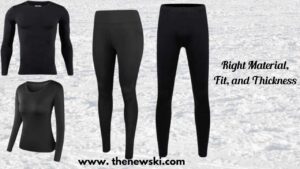
The base layer is the foundation of your ski layering system. Its main job is to keep you dry by wicking sweat away from your skin, which helps to regulate your body temperature and keep you comfortable on the slopes. Choosing the right base layer involves considering three key factors: material, fit, and thickness.
Material: The material of your base layer is crucial because it determines how well it can manage moisture and keep you warm. Common materials include merino wool and synthetic fabrics like polyester or nylon. Merino wool is a popular choice because it’s soft, breathable, and naturally resists odors. It’s excellent at regulating temperature, keeping you warm when it’s cold and cool when it’s warm. Synthetic fabrics are also effective at wicking moisture, dry quickly, and are generally more affordable. However, they might not be as warm as wool and can sometimes hold onto odors.
Fit: The fit of your base layer should be snug but not too tight. A close fit allows the material to effectively wick moisture away from your skin and trap heat, but it should still allow for full range of motion. Avoid base layers that are too loose, as they won’t be as effective in keeping you warm and dry. On the other hand, if it’s too tight, it can be uncomfortable and restrict movement, which is not ideal for skiing.
Thickness: The thickness of your base layer, also known as its weight, is another important consideration. Base layers come in three main weights: lightweight, middleweight, and heavyweight. Each one serves a different purpose depending on the weather conditions and your personal preferences.
Lightweight Base Layers (150-200g/m²)
Lightweight base layers are the thinnest and most breathable option. They are best suited for mild weather conditions or for individuals who tend to get warm easily. Lightweight base layers are excellent at wicking moisture and are ideal for high-intensity skiing or for use during spring skiing when temperatures are warmer. However, they provide less insulation, so they might not be the best choice for extremely cold conditions.
Middleweight Base Layers (200-300g/m²)
Middleweight base layers offer a balance between warmth and breathability. They are versatile and can be worn in a wide range of temperatures. If you’re skiing in moderate conditions or if you’re unsure about the weather, a middleweight base layer is a safe bet. It provides more insulation than a lightweight layer but is still breathable enough to prevent overheating during more active periods on the slopes.
Heavyweight Base Layers (300-400g/m²)
Heavyweight base layers are the thickest and warmest option. They are designed for extremely cold weather or for those who tend to get cold easily. These base layers offer maximum insulation, making them ideal for skiing in very low temperatures or for people who are more prone to feeling cold. However, they are less breathable and might be too warm if the weather is mild or if you’re skiing vigorously.
In summary, choosing the right base layer involves finding the perfect combination of material, fit, and thickness to match the conditions you’ll be skiing in. Lightweight base layers are great for warmer weather and high activity levels, middleweight layers offer versatility for various conditions, and heavyweight layers provide maximum warmth for the coldest days. By understanding these factors, you can ensure that your base layer will keep you comfortable, dry, and ready to enjoy your time on the slopes.
Mid Layer: Types, Fits, and When to Wear Them
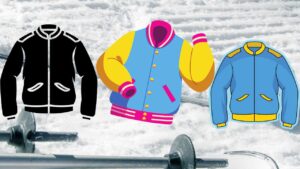
The mid layer is an important part of your ski outfit, responsible for keeping you warm by trapping heat between your base layer and outer layer. There are different types of mid-layers, and choosing the right one depends on the temperature and conditions you’ll be skiing in. Let’s break down the types of mid-layers, how they should fit, and when you should wear them based on the weather.
Types of Mid Layers
There are a few common types of mid-layers you can choose from:
- Fleece: This is a popular mid-layer because it’s lightweight, breathable, and provides good warmth. Fleece is also great at wicking moisture, keeping you dry and comfortable.
- Down: Down jackets or vests are filled with natural feathers and are incredibly warm and lightweight. However, down doesn’t perform well when wet, so it’s best for dry, cold conditions.
- Synthetic Insulation: This type of mid-layer is made from man-made fibers that mimic down but perform better in wet conditions. It’s slightly heavier than down but still provides excellent warmth and moisture resistance.
Fit of Mid Layers
The fit of your mid-layer is crucial for maintaining warmth without restricting your movement:
- Snug but Comfortable: Your mid-layer should be snug enough to trap heat but not so tight that it restricts movement or feels uncomfortable. It should fit easily under your outer layer without feeling bulky.
- Layering Considerations: If you plan to add extra layers, make sure your mid-layer isn’t too tight, allowing you to comfortably wear additional layers underneath or on top as needed.
When to Wear Mid Layers
The type and thickness of your mid-layer will vary depending on the weather:
- In Colder Weather (Below -5°C / 23°F): When temperatures drop below -5°C (23°F), you’ll need a thicker and warmer mid-layer. A down jacket or a thick fleece is ideal for these conditions, as they provide maximum warmth. You might also consider adding an extra mid-layer if it’s extremely cold.
- In Warmer Weather (-5°C to 5°C / 23°F to 41°F): For temperatures between -5°C and 5°C (23°F to 41°F), a medium-weight fleece or a synthetic insulated jacket works well. These options provide enough warmth without making you too hot as the temperature rises.
- Above 5°C / 41°F: When the weather is above 5°C (41°F), you might not need a heavy mid-layer. A lightweight fleece or even just your base layer might be enough, especially if you tend to get warm easily or are skiing in sunny conditions. If you choose a mid-layer, opt for something lightweight and breathable to prevent overheating.
By choosing the right mid-layer and adjusting based on the weather, you can stay comfortable and warm on the slopes without feeling too bulky or restricted.
Outer Layer: Why It Matters and What to Look For
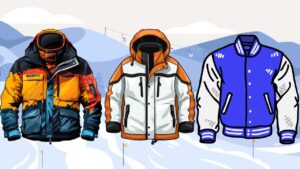
The outer layer of your ski outfit, often referred to as the shell, is crucial for protecting you from the elements, such as wind, snow, and rain. It acts as your first line of defense against harsh weather conditions while allowing moisture from your body to escape, keeping you dry and comfortable. Here’s why the outer layer matters and what you should look for when choosing one.
Why the Outer Layer Matters
The outer layer is vital as it shields you from the unpredictable and often harsh climate you’ll come upon at the slopes. Without an excellent outer layer, wind, snow, and moisture can penetrate your clothing, making you bloodless and moist. This can speedily result in discomfort or even hypothermia in extreme conditions. An awesome outer layer guarantees that your frame’s warmness is retained, moisture is saved, and sweat is allowed to get away, growing a balanced environment where you live warm and dry.
What to Look For in an Outer Layer
When choosing an outer layer, several factors come into play to ensure it performs well in varying conditions:
- Waterproofing: This is one of the most important capabilities of an outer layer. A waterproof jacket or pants prevent snow, rain, and sleet from soaking into your garb. Look for outer layers made with substances like Gore-Tex or different high-performance water-resistant fabrics. The water-proof rating is typically measured in millimeters (mm), indicating how much water pressure the fabric can resist earlier than leaking. For snowboarding, a water-resistant rating of 10,000mm to 20,000mm is typically enough.
- Breathability: While waterproofing keeps moisture out, breathability ensures that sweat and moisture from the inner garb can escape. This is essential because in spite of the satisfactory insulation, if sweat builds up inside your clothing, it may result in dampness and chills. Breathability is measured in grams (g), representing how a great deal of water vapor can pass through the material in a 24-hour length. A breathability rating of 10,000g to 20,000g is ideal for skiing, balancing protection, and comfort.
- Durability: The outer layer should be tough enough to withstand the rigors of skiing. Look for jackets and pants made with reinforced seams and durable fabrics that can handle abrasion from falls, trees, or carrying skis.
- Adjustability and Features: Consider outer layers with adjustable features like cuffs, hoods, and ventilation zippers. These allow you to customize the fit and airflow based on the weather and your activity level. Pockets with zippers and ski pass holders are also handy features to look for.
Waterproofing
Waterproofing is essential in an outer layer because it prevents external moisture, such as snow and rain, from penetrating your clothing. The effectiveness of waterproofing is determined by the fabric’s ability to resist water pressure, which is often tested by placing a column of water over the fabric. The height of the water column (in millimeters) that the fabric can withstand before leaking determines its waterproof rating.
- 10,000mm: This rating is adequate for light to moderate snow or rain, making it suitable for most skiing conditions.
- 20,000mm and above: For more severe weather, such as heavy snowfall or wet conditions, a higher waterproof rating provides better protection.
Waterproofing also depends on other features like fully taped seams, which prevent water from seeping through the stitching, and water-resistant zippers.
Breathability
While waterproofing keeps you dry from external moisture, breathability ensures that sweat and internal moisture can escape. If your outer layer isn’t breathable, sweat can build up inside, making you feel damp and cold, which defeats the purpose of staying warm and dry.
Breathability is typically measured in grams (g), which indicates how much moisture vapor can pass through the fabric over a 24-hour period.
- 10,000g: This is a good starting point for breathability, allowing moisture to escape during moderate activity.
- 20,000g and above: Higher breathability ratings are ideal for high-intensity skiing or warmer conditions, where sweat buildup is more likely.
Choosing an outer layer with the right balance of waterproofing and breathability ensures that you stay dry both from external elements and your own perspiration, keeping you comfortable and focused on enjoying your time on the slopes.
How To Keep Your Hands and Feet Warm
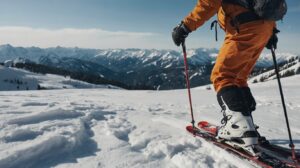
Keeping your arms and toes warm in cold weather is vital for staying snug and secure, especially when snowboarding or spending prolonged time outdoors. The proper desire for gloves or mittens is your first line of defense. Gloves provide higher dexterity for dealing with equipment, but mittens, which hold your arms collectively, are usually hotter in freezing conditions. Opt for gloves or mittens made from waterproof, windproof substances with desirable insulation to guard against the bloodless. Additionally, adjustable cuffs help seal out snow and wind, ensuring your arms live heat and dry.
Your toes are simply as essential, and carrying the proper socks can make a full-size distinction. Choose moisture-wicking socks made from substances like merino wool or artificial blends, which keep your ft dry by drawing sweat away from your skin. Dry toes are warmer feet, as moisture can quickly result in chills. Avoid cotton socks, as they lure moisture and result in dampness. Instead, go for medium-thick socks that match properly, allowing for correct flow and comfort interior your boots.
For warm temperatures, hand and foot warmers are an exceptional alternative. These small, air-activated packets generate heat and can be easily slipped into your gloves or boots, supplying numerous hours of extra warm temperature. They are particularly beneficial on very cold days or in case you tend to get bloodless effortlessly. However, be mindful of fit—boots and gloves which can be too tight can restrict stream, even as too free can permit bloodless air in. Properly fitting tools, blended with powerful layering, can make all the difference in keeping your fingers and toes heat, allowing you to revel in some time exterior without soreness.
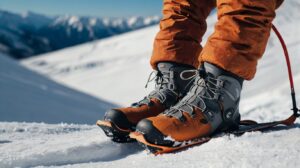
1. Gloves or Mittens
Gloves and mittens are your first line of defense against the cold. Gloves offer better dexterity, allowing you to easily handle ski poles, zippers, and other tasks. However, they can let in more cold air between your fingers. Mittens, on the other hand, keep your fingers together, which helps trap heat more effectively, making them a better choice in extremely cold conditions. When selecting gloves or mittens, look for ones made with waterproof and windproof substances, and which have good insulation, together with down or artificial fibers. Also, recollect gloves or mittens with adjustable cuffs to prevent snow and cold air from entering.
2. Socks
Your feet are another area that can easily get cold, so wearing the right socks is essential. Start with a pair of moisture-wicking socks crafted from substances like merino wool or synthetic blends. These substances keep your feet dry by way of drawing sweat away from your skin, which is important due to the fact moist toes get cold faster. Avoid cotton socks, as they preserve moisture and might make your toes feel damp and cold. Make sure your socks are not too thick, as this will restrict blood going with the flow, mainly to colder toes. Instead, choose medium-thick socks that suit properly and permit for correct stream.
3. Hand and Foot Warmers
Hand and foot warmers are small packets that generate heat when exposed to air. They’re an extremely good way to feature more warmth, in particular on extremely cold days. You can slip hand warmers into your gloves or mittens and region foot warmers beneath your ft internal your boots. These warmers can offer heat for numerous hours, assisting to preserve warmth even in freezing conditions. They’re especially beneficial if you have poor movement or if your extremities generally tend to get cold without difficulty. Just make sure they don’t make your gloves or boots too tight, as this may lessen stream and make your palms and toes feel colder.
4. Layering
Another effective way to keep your hands and feet warm is through layering. For your palms, you may wear a skinny liner glove under your primary gloves or mittens. Liner gloves are generally made from lightweight, moisture-wicking substances and provide an additional layer of insulation without including an excessive amount of bulk. For your feet, you can put on a skinny liner sock underneath your most important ski sock. This additional layer traps greater warmth and adds comfort, especially in very cold climates. Just like with the principle layers, ensure the liners are crafted from moisture-wicking substances to keep your pores and skin dry.
5. Proper Boot and Glove Fit
Ensuring a proper fit for both your boots and gloves is crucial for keeping your hands and feet warm. Boots that can be too tight can restrict blood flow, making your feet chillier. On the other hand, boots that might be too unfastened can allow cold air to flow into them, which additionally makes your feet bloodless. The same is going for gloves and mittens—if they’re too tight, they can cut off circulation, however, in the event that they’re too loose, they don’t preserve heat as correctly. Make certain your boots and gloves fit snugly however comfortably, with sufficient room for your feet and palms to transport slightly. Proper healthy additionally helps your equipment paintings higher with other warming strategies, like the use of hand and foot warmers.
By following these tips, including choosing the right gloves or mittens, wearing moisture-wicking socks, using hand and foot warmers, layering, and ensuring a proper fit, you can keep your hands and feet warm and comfortable even in the coldest conditions.
Budgeting for Ski Clothes: How Much Does It Cost?

Budgeting for ski clothes is an important step when preparing for a skiing trip, especially if you’re new to the sport or looking to update your gear. The cost of ski garments can vary widely depending on the satisfaction, logo, and particular objects you choose. Here’s a breakdown of what you may expect to spend and how to make the maximum of your budget.
Essential Ski Clothing Costs
The most important items you’ll need for skiing include a jacket, pants, base layers, mid-layers, gloves or mittens, socks, and accessories like a hat or helmet liner. A good ski jacket is one of the most expensive items, typically costing between $150 and $500, depending on the brand and features like waterproofing and insulation. Ski pants can range from $100 to $300, with similar considerations for quality and weather resistance.
Base layers and mid-layers are also essential for staying warm. Base layers usually cost between $30 and $100 per piece, while mid layers, like fleece or down jackets, can range from $50 to $200. Gloves or mittens typically cost between $30 and $150, depending on the material and insulation. Good ski socks range from $15 to $50 per pair, and accessories like a hat, helmet liner, or neck gaiter can add another $20 to $50.
Balancing Quality and Budget
While excessive-stop ski clothes offer first-rate performance and durability, they can be high-priced. If you’re on a finances, recollect prioritizing key items like a waterproof jacket and pants, that are essential for staying dry and heat. You can shop cash on base layers and mid layers by choosing less high-priced, but still powerful, options from reliable however financially pleasant manufacturers. Look for income, reductions, or maybe lightly used equipment to stretch your finances further.
Total Cost Considerations
Overall, you can expect to spend anywhere from $300 to $1,000 or more on a complete set of ski clothes, depending on the quality and brands you choose. If you’re skiing for the first time or only occasionally, renting or borrowing gear might be a more cost-effective option. However, if you plan to ski regularly, investing in good-quality clothing is worthwhile, as it will last longer and keep you more comfortable on the slopes.
In summary, budgeting for ski clothes requires balancing quality with what you can afford. By carefully selecting the most important items and looking for deals, you can get the gear you need without breaking the bank.
The Problem with Too Many Layers: Why Quality Over Quantity Matters
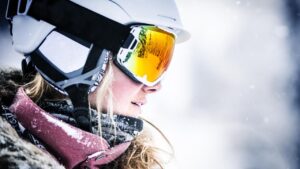
When it comes to staying warm while skiing, it might seem like wearing as many layers as possible would be the best approach. However, the problem with too many layers is that it can actually make you uncomfortable and less effective at staying warm. Here’s why choosing quality over quantity matters.
Overheating and Restricted Movement
Wearing too many layers can cause overheating, inflicting you to sweat more. When sweat builds up, it is able to make you feel damp and chilly, especially if your layers don’t breathe nicely. Additionally, piling on too many layers can restrict your movement, making it tougher to ski or experience different activities. Instead of adding more layers, it’s better to awareness of some great ones which might be designed to keep you heat while permitting your body to respire and pass freely.
Bulky and Uncomfortable
Excess layers can also make you feel bulky and uncomfortable. Skiing requires flexibility and stability, so wearing too many layers can make it tough to move clearly. High-high-quality ski garb is designed to offer warm temperatures without needless bulk, allowing you to live cushy and agile on the slopes.
Ineffective Insulation
Finally, too many layers can intrude on the effectiveness of your insulation. When layers are bunched up or compressed, they lose their capability to trap heat. Quality ski apparel, like a properly-made jacket or base layer, is engineered to keep you warm with fewer layers through the use of better materials and smarter designs. In this manner, you stay hotter and greater comfortable with much less bulk.
In short, quality over quantity is the key to effective layering. By investing in a few high-quality pieces, you can stay warm, comfortable, and ready to enjoy your time on the slopes without the drawbacks of too many layers.
Do’s and Don’ts of Layering for Skiing
Do’s of Layering for Skiing:
- Do choose moisture-wicking base layers: Wear base layers made from materials like merino wool or synthetic fibers to keep sweat away from your skin.
- Do invest in a quality mid-layer: Opt for fleece, down, or synthetic insulated jackets that provide warmth without adding too much bulk.
- Do wear a waterproof and breathable outer layer: A high-quality jacket and pants will protect you from wind, snow, and rain while allowing sweat to escape.
- Do make sure your layers fit well: Ensure each layer fits comfortably without being too tight or too loose, allowing for freedom of movement and proper insulation.
- Do adjust your layers based on weather conditions: Add or remove layers as needed to stay comfortable in changing weather conditions.
Don’ts of Layering for Skiing:
- Don’t wear cotton: Avoid cotton layers, as they retain moisture and can make you cold and damp.
- Don’t over-layer: Too many layers can restrict movement, cause overheating, and make you uncomfortable. Focus on quality over quantity.
- Don’t forget to protect extremities: Keep your hands, feet, and head warm with proper gloves, socks, and hats.
- Don’t ignore breathability: Ensure your outer layer is breathable to allow moisture to escape, preventing sweat buildup.
- Don’t overlook the importance of fit: Ill-fitting layers can reduce warmth and comfort. Make sure each layer fits properly to maximize insulation.
The Cost of Ski Clothing: How Much Should You Expect to Pay?
Here’s a table that breaks down the cost of ski clothing, helping you understand how much you should expect to pay for each essential item:
| Ski Clothing Item | Price Range (USD) | Description |
|---|---|---|
| Ski Jacket | $150 – $500 | Waterproof, insulated jacket to protect against cold and wet weather. |
| Ski Pants | $100 – $300 | Waterproof, insulated pants for warmth and protection from snow. |
| Base Layers | $30 – $100 per piece | Moisture-wicking tops and bottoms to keep sweat away from the skin. |
| Mid Layers | $50 – $200 | Fleece, down, or synthetic jackets that provide additional warmth. |
| Gloves or Mittens | $30 – $150 | Insulated, waterproof gloves or mittens to keep hands warm and dry. |
| Ski Socks | $15 – $50 per pair | Moisture-wicking, insulated socks designed for warmth and comfort. |
| Accessories | $20 – $50 | Items like hats, helmet liners, or neck gaiters to protect extremities. |
This table provides a general overview of what you might spend on ski clothing, depending on the quality and brands you choose.
Conclusion
In the end, layering for snowboarding is all about putting the proper balance between warm temperature, comfort, and mobility. By selecting high-quality base layers that wick moisture, mid layers that provide insulation, and outer layers that protect in opposition to the factors, you could live warm and dry at the slopes without feeling cumbersome or restrained. Remember, it’s not approximately how many layers you wear, but approximately choosing the right ones that paint together to keep you comfortable in varying situations. By following the do’s and don’ts of layering, you’ll be nicely organized to experience your skiing to the fullest.



